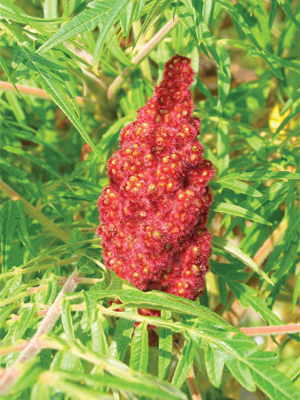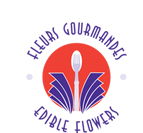Sumac, Staghorn sumac, sumaq, vinaigrier •
|
|
| Rhus typhina
Anacardiaceae
Legend and Lore The genus name rhus refers to the colour red (fruit, fall colour of the leaves), typhina relates to fevers, bulrush-like. The berries steeped in hot water made a medicinal tea to reduce fevers. In French vinaigrier refers to the vinegar smell on the fruit. Staghorn refers to the velvety smooth bark that does resemble the horns of a male deer. Large colonies of sumac are rumored to have sheltered woodland fairies and gnomes; the pointed red hat depicting the sumac conical fruit deceiving many travelers – the perfect camouflage... Rhus coriaria the related species endemic to the Middle East and Mediterranean is typically dried and used as an integral ingredient in Middle Eastern cuisine. In Roman times before lemons were part of the culinary scene, sumac berries with their strong lemony taste was used as a souring agent. Not to be confused with poison sumac (white berries) Rhus vernix; Rhus radicans poison ivy. In the Garden Deciduous shrub forming a thicket; leaves alternate compound pinnate with 13-27 leaflets, bright red in the fall. Flowers are greenish yellow, fruit crimson in the summer. Adapts to many types of soil but prefers well-drained…. Hard to kill plant and suckers freely from roots with older plant in the middle and new plants on the perimeter! Buyer beware – can have a place in a natural setting but not as a specimen plant. |
 |


